Text
Krewe of Madison attends Mardi Gras
by Bailey Watson, LGBTQ+ Student Archive Processing assistant 02/13/2024
In 2005, Mardi Gras came early. On February 8th, instead of 2024's February 13th, a group of Wisconsinites under the name "Krewe of Madison" traveled to New Orleans and partook in the festivities.


Adding to the fun, custom beads were designed and became a part of the annual New Orleans tradition, some even being included in Madison's St. Patrick's Day Parade.
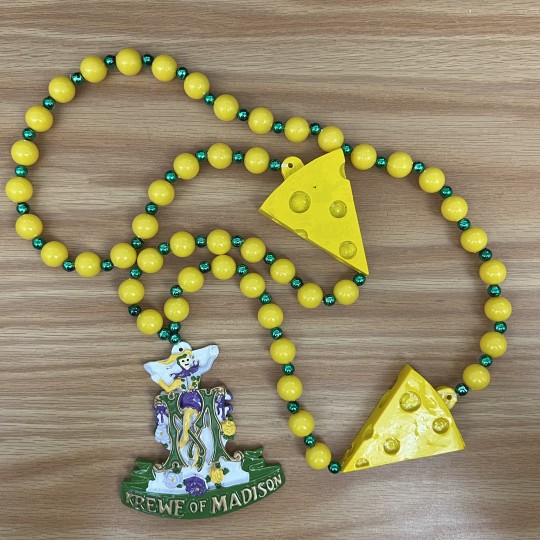
Each set of beads included a theme. From a callback to Wisconsin's beloved "Cheese Head" to Pirates and more, each of the five sets held in this collection is unique and colorful.
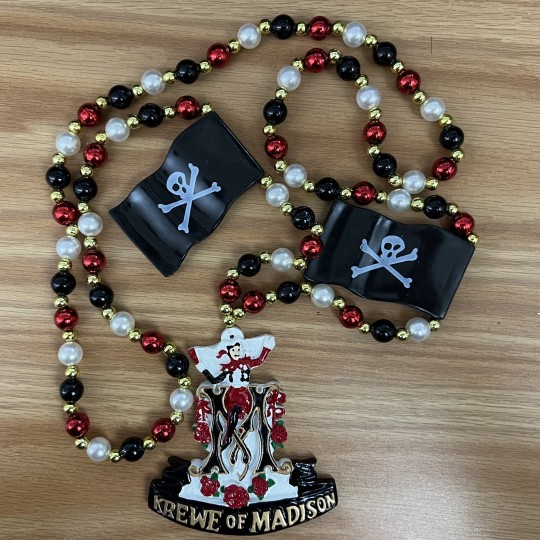
According to "The Mardi Gras Picayune" edition of the Krewe's informal newspaper, there were seven distinct sets of beads by 2004. "Anyone who shows up wearing all seven sets will receive a bottle of champagne," challenges the Krewe.

The Hula theme fits the 2003 celebration of Dan Curd's 55th birthday, which took place in Maui, Hawaii.

To learn more about the Krewe of Madison's many, many adventures check out the R. Richard Wagner papers (uac 201) held in the LGBTQ+ Archive at UW-Madison's Steenbock Library.
#uw-madison#madison wi#lgbtqia history#archives#mardi gras#new orleans#mardi gras beads#wisconsin#lgbt history
9 notes
·
View notes
Text
Archives Can Be Festive Too!
by Bailey Watson, LGBTQ+ Student Processing Assistant
12/22/2023
As the holiday season is upon us, we would like to showcase just some of our holiday ornaments from across many collections. This selection comes from the Wagner Button Collection (2015/316, 2017/274) in the LGBTQ+ Archives. There are a handful of holiday ornaments in this collection, most are Pride-themed. We hope these brightly colored ornaments will bring festive cheer to the dreariness of the last few days! Have a happy winter break!
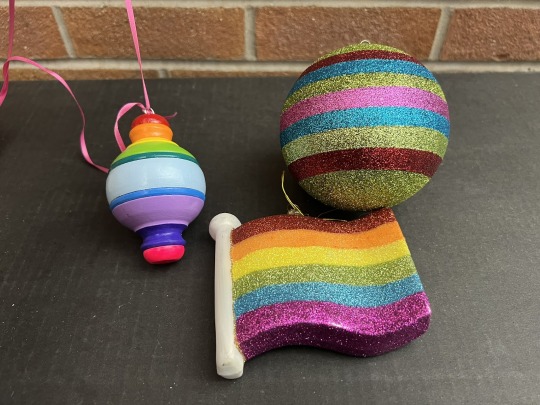
19 notes
·
View notes
Text
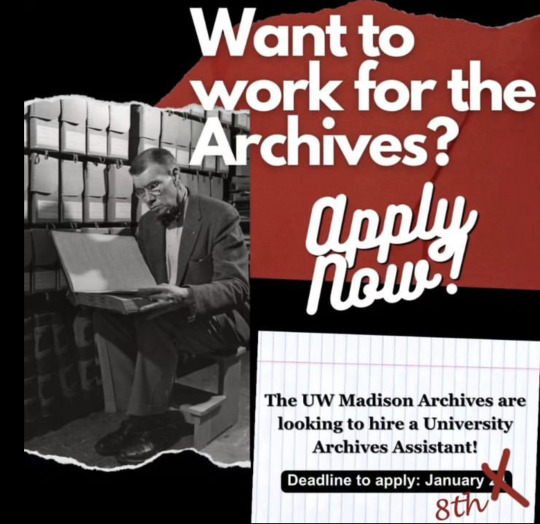
UPDATED. Deadline to apply is January 8 📣📣
5 notes
·
View notes
Text
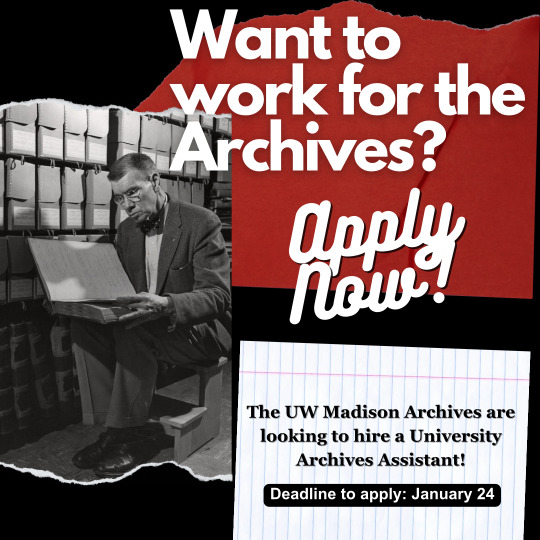
📣📣Job Alert! The UW Madison Archives are looking to hire!
4 notes
·
View notes
Text
50 Years Ago: APA Removes "Homosexuality" From DSM Diagnoses
Written by Bailey Watson, LGBTQ+ Archive Student Processing Assistant
12/18/2023
December 15, 1973 - By a vote of 5,854 to 3,810, the American Psychiatric Association removes homosexuality from its list of mental disorders in the DSM-II Diagnostic and Statistical Manual of Mental Disorders.
Content advisory: This post discusses the history of homosexuality in Western psychiatry and may contain offensive language or topics.
Last Thursday marked 50 years since the APA (American Psychiatric Association) removed “homosexuality” from its list of mental disorders. This change was made to the DSM-II Diagnostic and Statistical Manual of Mental Disorders (the current edition as of 2023 is the DSM-5-TR). The long history of homosexuality being included with physical and mental disorders dates back to the 19th century with Western European theorists working towards an understanding of same-sex attraction, leading to the coinage of the term “homosexuality” or “homosexual.” While these early theories positioned same-sex attraction or desires as unnatural, other theorists of the same decades aimed to prove that homosexuality was not abnormal but instead a natural variance of human sexuality.
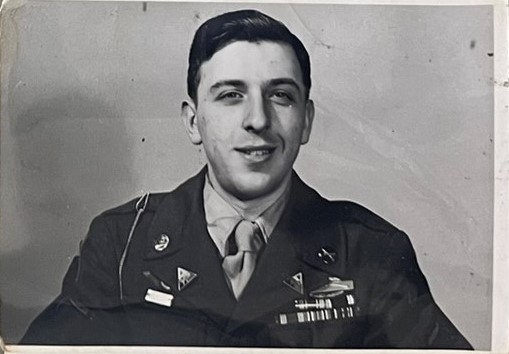
Photo Dr. Franklin Kameny from David Carter papers, Collection no. uac 183, Box 5, Folder 49.
The conversation around homosexuality as a disorder took a turn during the post-WWII period in the United States, during a phenomenon referred to as the “lavender scare.” This period, parallel to the “red scare” was a reaction to the Cold War policies and politics, resulting in the massive purge of homosexuals or suspected homosexuals from the federal government, and even further down to local governments (see here for information on UW-Madison’s history with the gay purges). Similarly, communists and suspected communists were also barred or purged from public service and government-contracted sectors.
In response to these purges, the early gay rights movement, then known as the homophile movement focused on organizing and protesting the conditions that made up the lavender scare. These conditions included the DSM’s classification of homosexuality as a diagnosable disorder. To the early homophile movement, as to some early theorists, homosexuality was perfectly natural, and therefore they could not pose a threat to national security.
One aspect of activism from this period was addressing the DSM's use of homosexuality as a diagnosable disorder. The homophile movement argued that sexuality had no bearing on mental health, and by stigmatizing the gay community, the DSM and APA were adding to the problem. Furthermore, by diagnosing people as "homosexual" the APA created a way to dismiss those voices and placed a barrier on the conversation on who was fit to participate in society freely and who was not.
Finally, in 1973 after years of protest and activism, the influence of activism, including the voice of Dr. Franklin Kameny (pictured above) and internal changes led to a new definition of mental disorder within the APA and thus removed homosexuality from diagnoses. A win for the homophile movement and a change that brought lasting and positive impacts to many people's lives, even 50 years later.
References and for further consideration:
Drescher, Jack. 2015. "Out of DSM: Depathologizing Homosexuality" Behavioral Sciences 5, no. 4: 565-575. https://doi.org/10.3390/bs5040565 (open access)
For more on Kameny and the early homophile movement, explore the David Carter papers, uac 182, located in the Madison LGBTQ+ Archive (housed at the University Archives, Steenbock Library)
#uw-madison#wisconsin#wihistory#madison wi#lgbtqia history#american psychiatric association#archives#university archives
11 notes
·
View notes
Text
Succeeding through “Failure”, Or When Oral History Doesn’t Happen
by Elisa Miller, Student Historian 2022/2024
Sometimes projects go off without a hitch, executed flawlessly from start to finish to manufacture a perfectly wrapped product the creator can take pride in. And sometimes projects never take off. Yet, having experienced the latter this semester, I’ve learned that a “failed” project can be fulfilling and something to be proud of. There are disappointments and frustrations, sure, but there’s something oddly satisfying about doing all the early work and preparation for essentially no outcome. So, here’s the story of my failed oral history project.
I entered my second year as student historian with a dilemma. I’d spent the summer roaming through the UW Digital Collections and going into the archives to find a new topic. This had been a struggle for me during my first year, so I wanted a head start going into the semester. After the Supreme Court overturned Affirmative Action, I began thinking about UW admissions and how they’d applied Affirmative Action over the years. So, I went into the archives and pulled boxes on admissions, Affirmative Action, anything I could find related to this issue. As an Asian American, I was particularly interested in admissions policies regarding Asian Americans due to the infamous notion that U.S. universities discriminate against Asians. After a few weeks of this, I realized the confidential nature of admissions was going to be a major roadblock. There was simply too much information I’d never be able to access.
As I was having this realization, I also had a major change of plans in my academic life. I had a last-minute opportunity to study abroad in Dublin at Trinity College in the spring, meaning I’d have to give up the position. Luckily, my wonderful supervisor, Digital and Media Archivist Cat Phan, was incredibly supportive and flexible, giving me the space and time to decide how to move forward. I decided to try and do a semester-long project instead of a year-long one. We talked through it and found the perfect way to tie everything together: an oral history project. It was a great way to work around the confidentiality of admissions by directly talking to Asian American students about their admissions experience and could also be completed in a semester if planned efficiently. I also already completed an oral history interview last February, so I was familiar with the process. I got the go-ahead from Oral Historian Troy Reeves in mid-September and immediately dove into preparing.
Given my condensed timeline, it was imperative to first find interviewees. I wrote up a proposal and sent it out to a few Asian American student organizations and Professor Lori Lopez, the director of the Asian American Studies program. I never ended up hearing back from any of the organizations, which was perhaps a bad omen from the onset, but Professor Lopez graciously agreed to send it out to all the students participating in the program. Here was my first success! Two students emailed me from Professor Lopez’s announcement indicating interest in my project. I got back to them and started preparing for the pre-interviews, interview topics, and my oral history “elevator” speech.
Some of the topics I wished to cover in the interviews:
Statistics: ACT/SAT scores, GPA, class rank
Extracurriculars
Essays
Why choose Wisconsin, as well as asking about any other schools they applied to
Asian American identity: how they understand this identity, how it plays a role in daily life/overall, how it did or didn’t impact admissions
Affirmative Action
With two students officially interested and two or three of my friends as backups, I had enough for a project. Troy had explained that three was the minimum number for a project, and with my timeline I’d ideally record around five or six interviews. I had a vague date for a pre-interview with one of the students, and the other had yet to respond, so it was time to play the waiting game. As October came and went, I continued to formulate my questions/topics for the interviews and think about how to center the project. What was the priority, their Asian American identity or the admissions process? I wanted to balance both, to dissect when the two intertwined and if they could ever truly be separated. The Affirmative Action question was difficult for me to tangle with. I didn’t want to catch people off guard and force them to take a stance on the issue, but I was genuinely interested in their thoughts. I decided to float it at the pre-interviews and gather a sense of the student’s comfortability.
Come Halloween, I had yet to hear back from either of the students who’d initially reached out and no other students responded. I started to panic, worried my project was falling apart before it even truly began. I reached out to both again, hoping I didn’t sound desperate. My friends were looking like they’d have to do some heavy lifting. All I could do was wait some more and keep working. I continued to research UW admissions and general Asian American admissions trends across the country: statistics, news articles, personal stories, I looked through everything. My project was becoming clearer and clearer in my mind, and I yearned to fill the gaps of my research with student’s voices.
But nobody got back to me. Disappointed, but not necessarily surprised, I was left with a few friends to turn to at the start of November. The clock was ticking as I had wanted to get all the interviews done by Thanksgiving in order to have enough time to finish processing the audio files by Christmas. I had the great misfortune to time all of this with midterms. My friends were, understandably, wishy-washy and hard to nail down with specific times. After two weeks of trying to rally them, I accepted defeat. There was nobody to participate in my project. My project was not going to happen. I had all the questions ready to go, I knew how they would create a cohesive narrative, the coffee shops for pre-interviews were chosen as well as the rooms for the interviews, the research was solid, and I was more than refreshed on oral history. Basically, everything was good to go, but now nothing was going to come of months of work.
I was disheartened, to say the least. It wasn’t even that I had done all this preparation for nothing, it was the fact that I wasn’t going to be able to do my project. I was genuinely interested in the topic and really felt I was targeting a group of voices that haven’t been heard on this campus. It was going to be a good project. Within all these feelings, there was something kind of amusing about the whole thing: it died because nobody wanted to participate. I had to accept that it was out of my hands, I couldn’t force anyone into an interview. That wouldn’t be fun for anybody.
So, I made peace with it. I realized I’d still done something. All that research and preparation may not have led to interviews, but I still learned a lot about admissions policies and their complicated relationship with Asian Americans. It also prompted a lot of questions, perhaps even more so than answers. Questions I would’ve loved to discuss with my peers, but nonetheless were ones for me to reflect on. The skeleton of the project still existed; it just never came fully to life. Would I have loved to give it a shock of electricity to the project’s heart? Of course. But that was impossible, and ultimately, I was still proud of everything I’d done this semester. Perhaps one day someone else will come along and revive my beloved oral history project, in a time when people are ready to share.
7 notes
·
View notes
Text
Mapping LGBTQ+ Spaces through the Years
by Chloe Foor, Student Historian 2022/2024
Hello everyone! Welcome to a little project update from your local Student Historian in Residence. The last two months have been filled with research, data collection, and learning new software programs. I’ve had a great time, and I can’t wait to share what I’ve been doing.
I spent the first few weeks of October doing more research, scouring both the Archives and the Internet to find more locations significant to LGBTQ+ Madisonians over the years. While in the Archives, I looked at the Lesbian, Gay, Bisexual, and Transgender (LGBT) Folder 1 Subject File, which has materials from the 1990s to the mid-2010s (see University of Wisconsin-Madison Subject Files collection. uac69, Box 75, Folder 10. University of Wisconsin-Madison Archives, Madison, WI.). The most interesting things to me was a document written by Joe Elder on Reflection on the LGBTQ movement on Campus, which he wrote in the aftermath of the 2016 Orlando Nightclub Shooting. It provided some really interesting perspectives on the LGBTQ+ Rights movement in Madison.
Online, my main source of information is the Wisconsin LGBTQ+ History Project, which I wrote more about in my last blog post. I didn’t realize that they had digitized copies of old guides that listed LGBTQ+ friendly businesses as far back as 1963. It was fascinating to go through those and find the locations that queer people frequented in the past. The most interesting place that I found that was listed was called Apple Island, which I have seen before in archival research, but I didn't know it was in Madison. Apple Island was a community organization created to promote women's culture, and it was reported that 90% of the clientele were lesbians. My favorite part of the research project is finding these lesser-known spaces, and I can’t wait for more people to be able to easily access them through my project!
Outside of finding new “spaces,” I spent some time filling in the spreadsheet I use to keep track of each location. For each space, I list the title, address, significance, and years it was active, but sometimes it's hard to find all of that information on the first pass through. Sometimes, I'll just write the title and a short description, and then I can go back through later and fill in the rest. Now, all 165 entries are fully fleshed out!
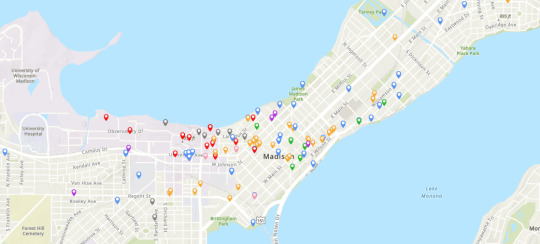
With the spreadsheet being fully populated, I was ready to import it into ArcGIS, a digital mapping software. It was able to read the spreadsheet into different categories and add every space to a map! In the above image, all of the gray makers are for “Purge,” the blue markers are for “Community,” the orange markers are for “Commercial Area,” the purple markers are for “Healthcare,” the pink markers are for “Media,” the green markers are for “Politics,” and the red markers are for “UW”! If you click on a marker, a pop-up window will display with information about the location, including beginning and end dates as well as a short description.
Here is the pop-up for The Crossing:
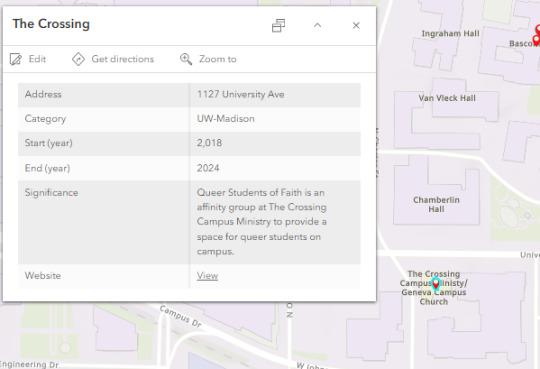
In the coming months, I will be working on making a public website to share my research! I also want to host an outreach event in collaboration with the Gender and Sexuality Campus Center and Phi Alpha Theta, the History Honors Society. I’m sure more meetings on the topic will come up in the coming months, and I will make sure to keep you posted! For now, though, that’s all from me!
7 notes
·
View notes
Text
The End of the Road
by Elisa Miller, Student Historian 2022/2024
Hello, hello! It’s hard to believe we’re past Thanksgiving, and I’m sure 2024 will be here before we know it. I’ve been incredibly lucky to work with the UW Archives over the last year and I’m sad to be saying goodbye to this position in the coming weeks. I had a last minute opportunity at the start of the semester to study abroad, so I’ll be participating in the Trinity College exchange program this spring. Unfortunately this meant my time as a student historian was cut short this year. The ever-supportive and flexible Cat was kind enough to give me the space and support to decide how I wanted to move forward. We ended up deciding on a semester-long project with me wrapping up my post at the end of the semester.
I spent the summer doing general research and thinking about potential topics for the year. I had wanted to continue working with the Asian American experience on campus. When the Supreme Court reversed Affirmative Action, it got me thinking about the admissions process for Asian Americans. My parents often joked that I should just put my ethnicity as caucasian while I was applying for schools because of the model-minority stigma against Asians in admissions. This idea was fascinating to me and I fell into a deep dive into UW admissions.
After some time in the archives and the UWDC, I realized I was hitting a wall due to the confidential nature of admissions. There was simply too much information I was never going to get access to, so I doubted I would be able to complete a full project on the topic. Then, I thought about taking my research and putting it towards an oral history project instead. This was a great workaround to my research block, as I could just speak directly to the sources. Troy and Cat agreed it was a good topic for oral history and, thus, I started on the process.
Having completed an oral history interview earlier this year, I felt relatively comfortable with the process. Of course, this would be more extensive than the one I did, so I spent some time refreshing myself on oral history and how to go about coordinating multiple interviews. Unfortunately, after weeks of work, I was unable to find enough participants to go through with the project. While I’m disappointed I won’t be able to continue working on this topic, I am still incredibly happy with the work I’ve done this semester.
Now, I’m looking at the end of the journey. It’s been a great one, and I’ve been so honored to share it with all of you. I have a few more things up my sleeve, so you may hear from me again about a more in-depth look into an unfulfilled project. Thanks for reading as always!
10 notes
·
View notes
Text
WORT (89.9 FM) Queery Segment
Tonight (11/8/2023) from 7-7:30pm, WORT (89.9 FM) will be hosting Katie Nash and Scott Seyforth from Madison's LGBTQ+ archive on their Queery radio program! They are very excited to share their knowledge and promote the archive. If you or someone you know would be interested in learning more about WORT's Queery show or would like to listen to past shows, more can be found here. You can tune in on your radio, or on WORT's website under "Listen Live."
5 notes
·
View notes
Text
LGBTQ+ Archive Update
Starting today, we are happy to announce that this account will also feature stories from the LGBTQ+ Archive! Previously these stories were posted on separate social media accounts so we are excited to share them all in one place.
15 notes
·
View notes
Text
Back in Business
by Chloe Foor, Student Historian 2022/2024
Hello everyone, long time no see! I am so excited to be a Student Historian with the University Archives for another year! This year, I’m going to be doing something quite a bit different from my oral history project last year, and I was able to get a head start over the summer. Read on to learn more!

From the Wisconsin LGBT History Project, showing LGBT Businesses in Madison.
This year, I am working on a project that will map queer spacemaking in Madison from the late 1940s to present day. During the summer, I worked on teaching myself ArcGIS, which is the mapping software that I will be using to document these places. I also spent working through the Madison LGBTQ Archive, housed in the UW Archives, researching using documents about the Gay Purges, the GSCC’s foundation, and other early LGBTQ-related events and organizations in the area. I’m excited that I’m able to spend more time in the Archives this year, since that was one thing that I wish I did more of last year. When I’m not researching in the archives themselves, I’m scraping the web, trying to find queer spaces in the area through history. Some resources that have been essential to me have been Dick Wagner’s We’ve Been Here All Along and Coming Out, Moving Forward, which chronicle LGBTQ+ History in Wisconsin from the turn of the 20th century to Stonewall to present day. Some projects similar to my own project that have been incredibly helpful are Mapping the Gay Guides, which hosts an interactive map of queer spaces in America from 1960 to 1980, and the Wisconsin LGBT History Project, which has an interactive map of queer business in Wisconsin from the 1950s to the 2010s. I’ve gotten many incredible entries from all of these resources, and I am currently at over 160 entries!
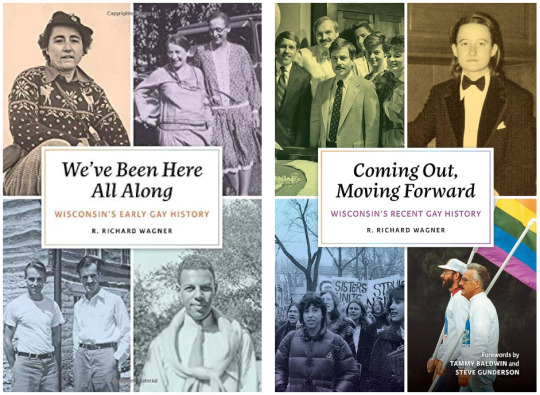
We’ve Been Here All Along and Coming Out, Moving Forward by Richard Wagner, detailing queer history in Wisconsin.

Joe Hammersley (far right), the driving force behind the Gay Purges at UW in the 1950s. Photo from 1951 Badger Yearbook, UW Archives.
Defining exactly what counts as “queer spacemaking” has been a process for me. At first glance, some counter-intuitive locations are included on the map, such as the places where men were arrested during the Gay Purges. These may seem like an absence of queer space, since these spaces were being policed and persecuted by the authorities. However, in order to have been a location that the police knew about, they first had to be a queer space, where LGBTQ+ people might have been comfortable expressing their true selves and desires, if only for a short while. Such locations include the basement of Science Hall, bathrooms in Bascom Hall, and 1514 Adams Street, the residence of two men who, upon being caught kissing outside, were arrested and were the first known victims of the Gay Purges.
All that being said, I really want to get feedback from the community on queer spaces to include on this project. If you head to tinyurl.com/queeratuw, you can submit your own entry to be included on the map! You can submit as many as you like, as long as the entries are places in Madison relating to queer history.
That’s all for now! I’ll make sure to keep you updated over the coming months as the project progresses.
11 notes
·
View notes
Text
Coats and cold at Madison's first Pride Parade
Earmuffs and mittens featured at Madison’s first Pride parade. Out of all the recordings of Pride celebrations in UW Archives’ Nothing to Hide collection, only one features marchers and spectators alike donning winter coats to keep out the cold. Madison’s first Pride Parade was held in 1989 on the coldest May 6 on record, with a high temperature of only 38 degrees and light snow falling the previous night. Undeterred by the cold, over 7000 people attended the march and rally. The event was organized by the newly formed Gay And Lesbian Visibility Alliance (GALVAnize for short). It featured speeches by David Clarenbach, the author of Wisconsin’s first-in-the-nation 1982 gay rights law, Ricardo Gonzales, Madison Alderperson and the first openly gay Latino elected official in the nation, and Tammy Baldwin, then serving as a member of the Dane County Board of Supervisors and just about to graduate from University of Wisconsin Law School.
Nothing to Hide was a community access television program focusing on LGBTQ+ issues produced by David Runyon that ran on WYOU in Madison from 1981-2001. One of the longest-running LGBTQ+-centered televisions shows in the nation, the episodes are an invaluable resource documenting Madison’s rich LGBTQ+ history. The tapes were donated to the UW-Madison Libraries and are now housed at the UW Archives; they are currently being digitized and described. The end goal of the project is to make the collection of more than 700 episodes available to the public.
This speech is just one of the many unique events that would go unrecorded if they were not documented by Runyon and preserved in the UW Archives. Do you have memories of David Runyon or the Nothing to Hide program? Interested in contributing to the continuing documentation of Madison’s rich LGBTQ+ history? We would love to hear from you! Contact either Cat Phan at [email protected] or Jean Chrysanthemum at [email protected].
29 notes
·
View notes
Text
Hello! My name is Kayla Bell, and throughout this past school year I had the amazing opportunity of working on the Mohs Oral History Project. Throughout the experience, I had the incredible opportunity to learn about the extraordinary life and career of Dr. Frederic E. Mohs. As an individual whose impact has proven to be universally profound, it was an honor to continue the work that previous student workers, Sophie Clark and Emma Helstrom, began and aid in the collection of the oral histories and memories associated with his legacy. My experience working on this project is one that has certainly left a mark on the trajectory of my career moving forward. My time spent on it has significantly influenced my interest in pursuing Oral History as a profession. I learned not only about such an extraordinary man but I have gained a newfound appreciation, and passion, for the way in which my interest in journalism and history can collide. It was truly remarkable to learn about Dr. Mohs’ incredible legacy. I would like to personally thank Troy Reeves for the supervision and support he provided me during my time on the project, and it was a pleasure to work with like-minded individuals throughout.
It is clear from my time spent on the project that Dr. Mohs’ legacy is one he not only deserves, but one he deserves to have recognized. He was a man driven by passion and dedication to the medical world, and Mohs Micrographic Surgery not only revolutionized skin cancer treatment but dermatology as a discipline. With his procedure, he was able to consistently and repeatedly demonstrate cure rates above 99 percent for multiple types of skin cancer, and, over the course of his career, he treated an estimated 30,000 to 40,000 cancer patients. The discipline and dedication that level of labor requires is invaluable, and it was a privilege to learn about his career. He is, and should always be, a notable mark in the history of the University of Wisconsin-Madison School of Medicine and Public Health.
Those who dedicated their time to the project to share their histories and memories associated with Dr. Mohs did so with respect and admiration. They painted the picture that Dr. Mohs was not only an extremely hard working individual, but someone who placed value on teamwork. He was known for being even-tempered, humble and kind. As Sophie, once said, "This kind of medical discovery is one that does not happen overnight and it certainly is not the product of one man." It was through the work of a team, hired and trained by Dr. Mohs, that led to the discovery and perfection of his technique. Though I, myself, didn’t have the opportunity of speaking with them during my time spent on the project, listening to the interviews conducted by both Sophie and Emma made it clear to me that Rachel Caruso, Mary Jane Ellickson, Mary Smith, and Mike Hetzer’s roles in the Mohs clinic were irreplaceable to the success of Dr. Mohs’ career.
Most importantly, though, I had the pleasure of meeting with and collecting the oral history of Dr. Mohs’ grandson, Dan Mohs. Dan Mohs was an incredible individual to speak with, and I truly believe that the addition of family members to this project is one that will shed such a fascinating light on who Dr. Mohs was outside of the medical world. From my time spent collecting Dan Mohs’ oral history, I gained even more respect for the man Dr. Mohs was and the legacy his name carries. In the above audio snippet, you can hear Dan Mohs talk about the legacy of his grandfather and the admiration he still, to this day, has for him. Dan Mohs is an incredible individual, and I believe this small snippet of his oral history shows the full scope of who Dr. Mohs was both inside and outside of the medical world.
I look forward to the Mohs Oral History Project's website going live either later this summer or fall. The oral histories collected for this project are truly fascinating, so make sure to check them out once they're online! Thank you all so much for reading about my journey, and I wish everyone in the Archives the best of luck with your futures. It was a pleasure working with you all!
Submitted by Kayla Bell, Mohs Oral History Project Student Coordinator, UW-Madison Oral History Program
8 notes
·
View notes
Text
All Systems Go!
by Chloe Foor, Student Historian 2022/2023
It’s kind of crazy to think that almost a whole year has gone by so quickly! Since I’ve last written, I’ve wrapped up processing the oral histories. I have created transcriptions, indexes, and abstracts for six out of the seven oral histories that I’ve conducted, and am in the process of finishing up the last one! While this process is incredibly time consuming, it is also incredibly rewarding. I know that the work that I am doing will allow these oral histories to be accessible to anyone who might be interested in my research topic, and I hope that in the future, a student will find them and become as fascinated with my findings as I have been! These oral histories should be up on the archives website next semester, so make sure to check them out once they get uploaded!

Website for my own project
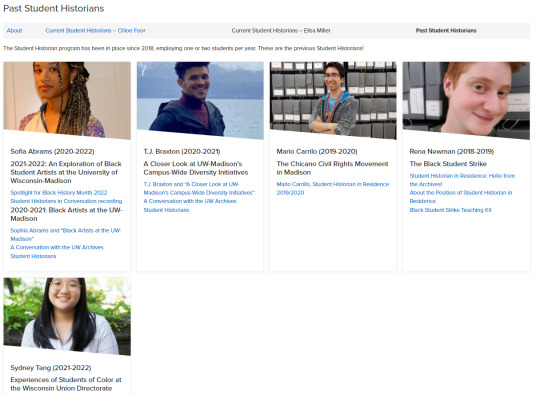
In less than a week, I will be presenting my research alongside Elisa, the other Student Historian, and Shelby, the recipient of the Undergraduate Research Award. I am super excited to share my research from the last year with everyone, and I know that Elisa and Shelby are also excited! If you want to come to these presentations, they will be Friday May 5th at 12:30 in Memorial Library room 460! If you can’t make it, it will also be recorded and uploaded to the Archives’ YouTube channel!
Finally, I am so excited to share that I have been offered to continue as Student Historian through the next school year! I am not completely sure what my topic will be just yet, but I know that I will likely continue researching the history of queer students at UW. Right now, I am toying with the idea of queer space-making here at Madison, such as the formation of the Madison Alliance for Homosexual Equality, the GSCC, and other LGBTQ+ affinity groups on campus! We’ll see where that idea goes, but I do know that I want to spend more time in the archives next year! I was not in the archives that much this last year, I went to explore the Daily Cardinal and files on the Gay Purges and AIDS, but I know that the archives has a plethora of other LGBTQ+ materials that I would love to explore!
As always, thank you so much for reading about my journey! I am looking forward to continuing these blog posts through the next year!
#student historians#undergraduate research#uwmadison#madison wi#campus history#queer history#lgbtqia history#oral history
7 notes
·
View notes
Text
Oral history from pre-interview prep to transcribing, indexing, and abstracting!
by Elisa Miller, Student Historian 2022/2023
Hi all! As this semester speeds by, I cannot believe I only have a few weeks left as a Student Historian. This has been an amazing year and I have learned so much throughout this process. While I’m incredibly proud of all the work I’ve done and looking forward to our final presentation in May, I am also sad to see my time in this position coming to a close. It has truly been a pleasure to work with Cat, Troy, and everyone else I’ve encountered at the Archives.
Since my last post, I have fully completed the oral history process with Professor David Furumoto. It took a lot more labor than I anticipated, but I had a wonderful time from start to finish. A special thanks to Troy for all the help and guidance he provided throughout the experience! I continued to familiarize myself with the oral history process and Professor Furumoto’s work up until the day I first got to meet Mr. Furumoto. The pre-interview went smoothly and it was great to finally meet the person I’d been researching for weeks. I knew the actual interview would similarly go well based on this first conversation as Prof. Furumoto already had a plethora of interesting things to say in the pre-interview.
One of the most interesting things that came out of this conversation was when Prof. Furumoto told me about a closet of stuff from A.C. Scott, the founder of the Asian Theater program here, was still in Vilas Hall. It included costumes, screens, videos, images, props, and more. I was able to connect some people at the Archives with the Theater Department to organize a time for the Archives to come look through all the stuff. While this is still pending (we’re looking at early May!) I am happy I was able to jumpstart the process. I hope to be available to also go through the closet as it will likely be the physical remnants of all the research I’ve been working on this year!
We scheduled the interview two weeks out after our initial meeting, giving me time to do some more prep work: research and practice, practice, practice! By the time I arrived at Memorial Library for the interview, I hardly even felt any nerves because I knew I’d prepared so much. The interview went really well and I learned a lot of really incredible things about Prof. Furumoto and his time here at UW. He was a fascinating subject and told a really compelling story across our hour of conversation. I just did my best to stay engaged and propel the conversation forward smoothly.
I finally finished transcribing, indexing, and writing an abstract in the last few weeks. This took longer than I was anticipating, but I wanted to ensure I was being as thorough as possible. It was interesting to come back to the interview about two weeks later and listen to it as a third party. While it’s always cringe worthy having to listen to yourself speak, I was still immensely compelled by Prof. Furumoto, and was even able to process some of his answers a bit more than I did in the actual interview.
Finally, I have just been working on a page for the Student Program website my fellow Student Historian, Chloe, has started. I am definitely still trying to get a hang on WordPress, but I think it was a fantastic idea and I’m excited to get all my work up there. I’m also getting ready for our Student Historian final presentation in May which I’m perhaps equally parts excited and nervous for.
The presentation and reception will be held on Friday, May 5th from 12:30 to 2:00 pm in the Memorial Library Commons at UW-Madison and will be a joint event with this year's UW-Madison Libraries Undergraduate Research Award winner, Shelby Len! Stay tuned also for a virtual option.
As always, thanks for reading, and I will see you all for my final post in May!
13 notes
·
View notes
Text
Gay Marriage on the Capitol Steps, 1996
by Jean Verger, archives assistant, Nothing to Hide Project
“At least in the long run, victory must be ours!” These words concluded a speech given 27 years ago in 1996 by Senator Tammy Baldwin. She was speaking at a gay wedding ceremony performed on the steps of the State Capitol. This event was recorded and later televised by David Runyon’s “Nothing to Hide” program that ran on WYOU public access television in Madison. UW Archives are working to digitize and describe the tapes from Nothing to Hide, with the ultimate goal of making the videos available to the public.
When she said these words, Baldwin was serving as the first openly lesbian member of the Wisconsin State Assembly. Today, she serves as the first openly LGBT member of the United States Senate. With the passage of the Respect for Marriage Act, sponsored by Sen. Baldwin and signed into law by President Biden on December 13, 2022, those words ring truer than ever. The Respect for Marriage Act repeals the 1996 Defense of Marriage Act, which restricted same-sex marriage nationwide, and protects the rights of LGBT couples to marry even if the Supreme Court were to overturn their landmark 2015 decision in Obergefell v. Hodges.
This video was recorded as Congress was in the process of passing DOMA, and Baldwin’s speech was delivered in the context of increasing legislative backlash at the prospect of LGBT people being able to legally marry. Laws and constitutional amendments prohibiting same-sex marriage had been introduced in over 30 states by mid-1996, including Wisconsin. Wisconsin’s bill was passed by the Assembly but the Senate took no action to advance the bill. Later, in 2006, a constitutional amendment defining marriage as “between one man and one woman” was passed by the legislature and approved by a statewide referendum, 59% to 41%. However, this amendment was struck down in the court case Wolf v. Walker in 2014.
Nothing to Hide was a community access television program focusing on LGBTQ+ issues produced by David Runyon that ran on WYOU in Madison from 1981-2001. One of the longest-running LGBTQ+-centered televisions shows in the nation, the episodes are an invaluable resource documenting Madison’s rich LGBTQ+ history. The tapes were donated to the UW-Madison Libraries and are now housed at the UW Archives; they are currently being digitized and described. The end goal of the project is to make the collection of more than 700 episodes available to the public.
This speech is just one of the many unique events that would go unrecorded if they were not documented by Runyon and preserved in the UW Archives. Do you have memories of David Runyon or the Nothing to Hide program? Interested in contributing to the continuing documentation of Madison’s rich LGBTQ+ history? We would love to hear from you! Contact either Cat Phan at [email protected] or Jean Chrysanthemum at [email protected].
12 notes
·
View notes
Text
Karma Chavez, Outstanding Women of Color, Part 2
by Lucia Estrada, project coordinator, Outstanding Women of Color Oral History Project
When asked about what advice she would give those interested in pursuing a career dedicated to activism work, Karma shares her tips on staying grounded and preventing burn out. Highlighting the heavy nature of the work, Karma gives her advice for making sure one does not get discouraged by the potential emotional toll that comes with activism work.
“I think I'm at a place in life where I kind of have a long view. And I think, think that's often harder when you're younger to have a long view that, you know, we might win little battles, we might get some things we want. But, we'll have to keep our eyes on the kind of big picture of what we're working toward and know that not everything is going to get done in one day. Not everything is going to get done in one week or one year even. And so, you can't just throw everything into the movement and not take care of yourself at the same time because you I'll burn out and then you're of no use to the movement. And so, you know, the movement is a, you know, a slow march in many ways. And sometimes you're going to need to run, but not all the time.”
Editor’s note: to see more post in this series, either scroll down from this post or go to our Tumblr (then scroll down). And here’s the news article about Lucia and this oral history project.
4 notes
·
View notes